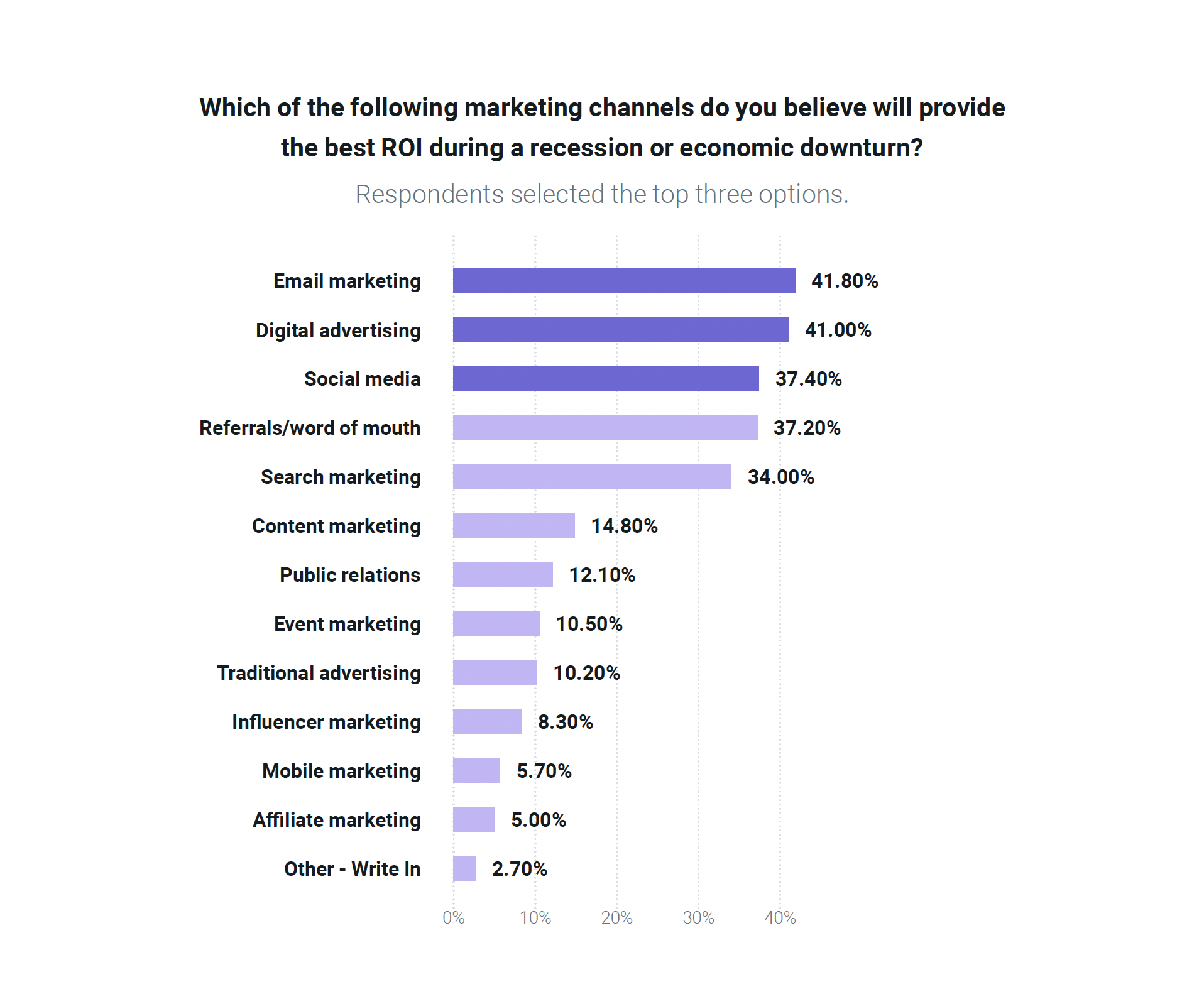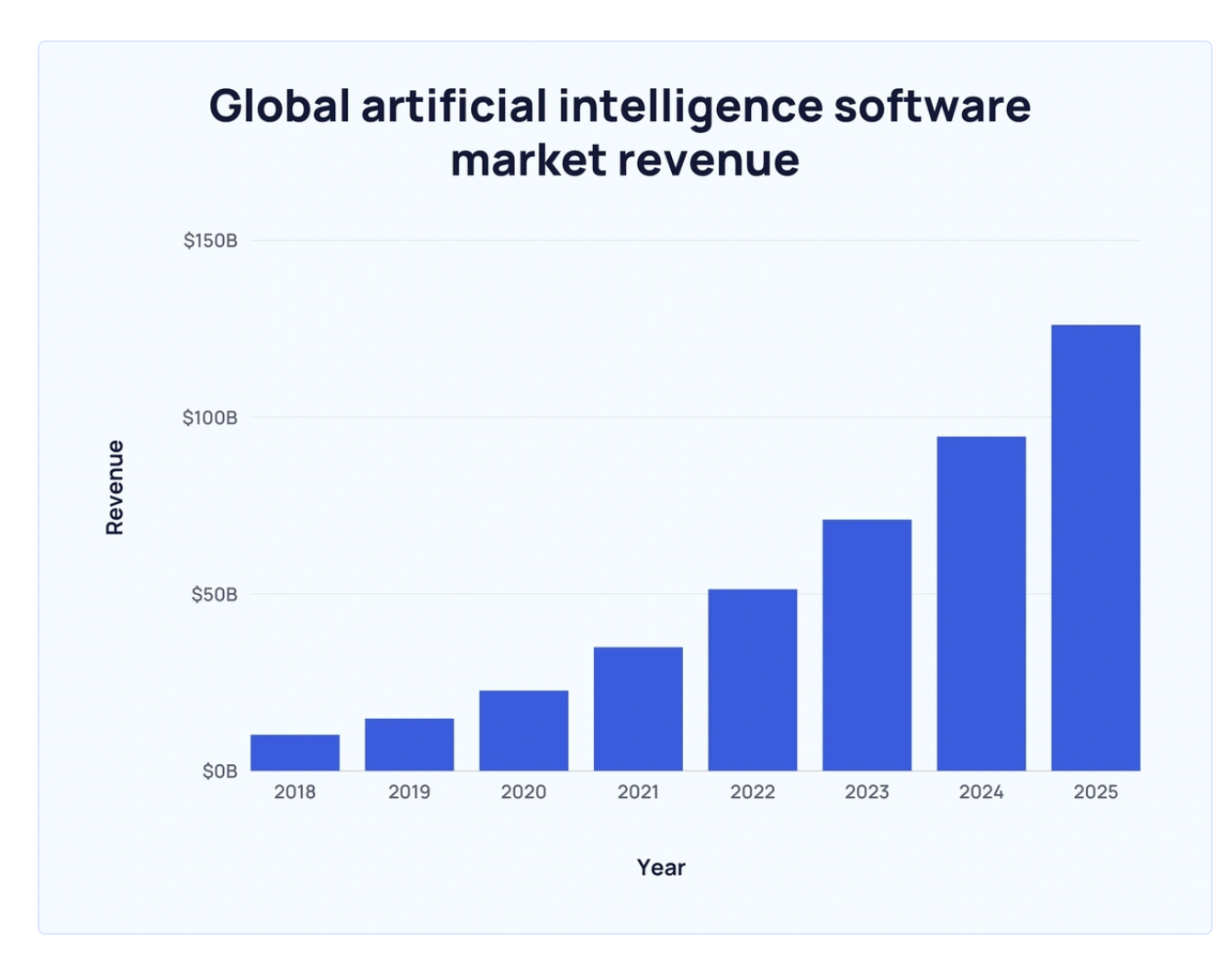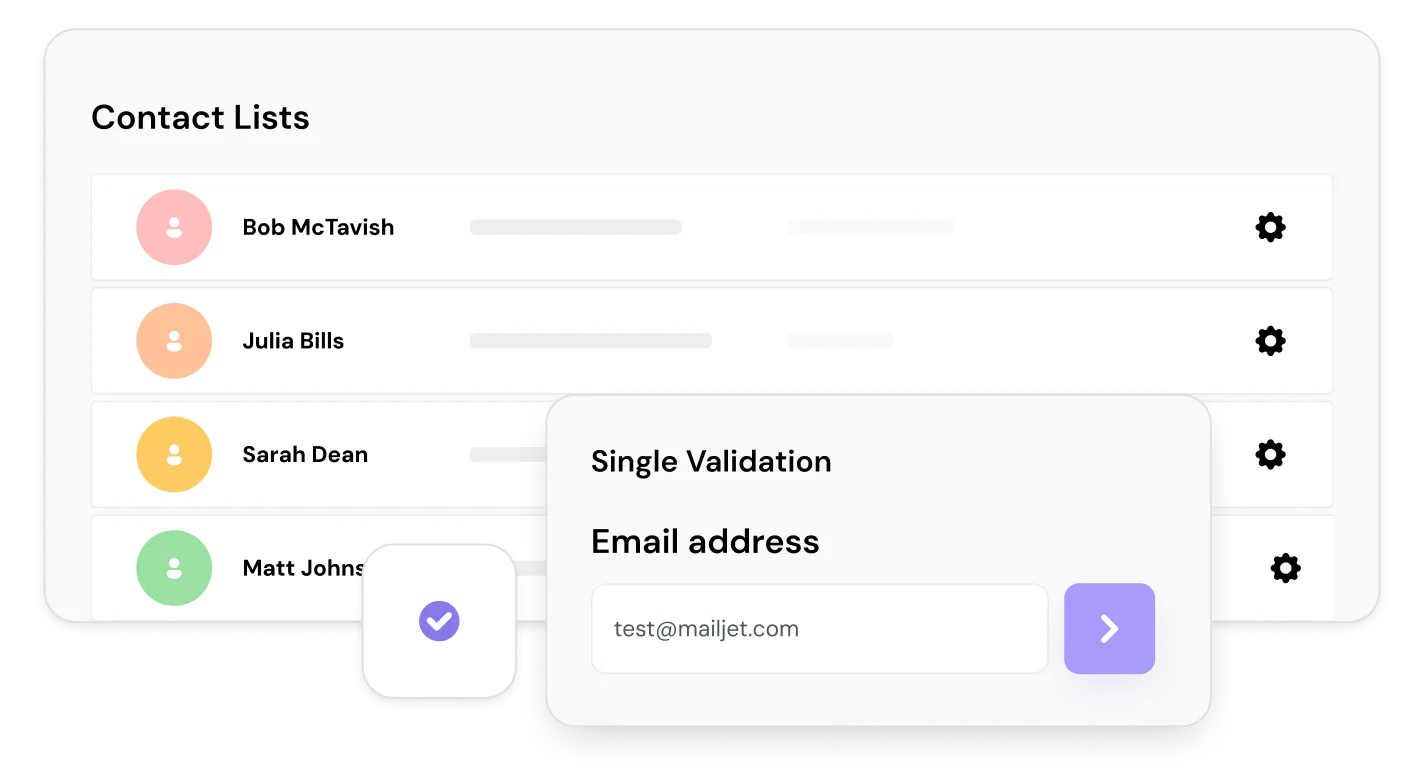Email best practices
Email marketing trends for 2023

Email best practices

Let’s face it – the world is shaping up to be a complicated place in 2023. With looming threats of a global recession, brands everywhere are bracing themselves for a year of uncertainty and, in some cases, a certain degree of scrappiness in their marketing efforts.
If you’re here, you’re probably looking to discover what email marketing trends, tools, and features might help you tip the balance in your favor next year. We get it – in the midst of change, it’s always better to be prepared.
Well, fear not. We’ve asked our team of email, deliverability, and lifecycle marketing experts for their predictions for the new year. So, pull that new notepad out and get ready to jot down the secrets to email success in 2023.
Every time the economy enters a period of instability, companies look at their marketing budget to find costs they can cut to make ROI ends meet. But should they?
Over the years, research has found that companies that maintain a healthy and stable investment in marketing during a recession are most likely to outpace their competition. However, analyzing channel performance during economic mayhem is a natural and recommended practice. Knowing what channels work best for your brand is key to ensuring you’re investing your valuable marketing dollars correctly.
In our recent report, Email in an evolving economy, we asked respondents what channels they believed would provide the best ROI during a recession. Email marketing came out on top (41.80%), closely followed by digital marketing (41%).

That’s not surprising. Email’s unique ability to target subscribers with personalized and relevant messages makes it the best channel to drive revenue and improve customer loyalty – both top concerns for companies amid a recession.
If there’s something we were forced to accept during 2022, it’s that open rates are not the be-all and end-all of email marketing.
Over the years, email senders have been consistently looking at opens as a key indicator of email success. But with the rise of new privacy features that mask IP activity (remember Apple’s Mail Privacy Policy?), they have become rather unreliable. And while ESPs have been working to exclude bot activity and automatic engagement from their open metrics, the rise of these privacy settings has forced email marketers to reconsider what they’re measuring when an email is sent.
In 2023, we will see companies implement more efficient tracking to go beyond email opens and really measure the impact each email has in achieving marketing goals. For that, brands will need to clearly establish attribution models and tracking capabilities via UTMs that help determine what happens after an email is opened.
There are several metrics that email marketers can use in addition to open rates to measure the effectiveness of their email marketing campaigns, including click-through rates, conversion rates, bounce rates, and unsubscribe rates. In addition to these metrics, you should also consider factors such as the quality of the email content and the relevance of the messages to the recipients. By looking at a combination of different metrics, you can get a more complete picture of the effectiveness of your email marketing campaigns.
Gone are the days of simple “Hi Bea”s and friendly “Welcome Phil”s.
With over 20% of Americans receiving over 50 emails a day, simple personalization or segmentation techniques just don’t cut it anymore. Customers are demanding truly relevant experiences that provide value for them across the entire journey. In fact, a recent Salesforce study found that 73% of global consumers expect brands to cater to their unique needs and expectations.
But enriching our email data has always been a challenge for marketers – mostly from a technical perspective and, in recent years, due to new privacy regulations. Yes, the fine art of providing truly personalized messages without sounding creepy is becoming even finer. How do you make your messages more relevant when new privacy policies are making customer data scarcer and harder to obtain?
In 2023 and beyond, hyper-segmentation and hyper-personalization will become the norm in email marketing, but that will need to be balanced with a respect for customer privacy. The key to building personalized emails throughout the customer lifecycle will be in the use of zero-party data – that is, data that the user shares freely with the company, effectively allowing them to use it to provide more relevant messages and offerings.
Requesting the right data during the sign-up process will allow brands to connect with their users in a more relevant way, without it feeling like someone’s been peeking into your life through a peephole.
For a few years, interactivity has been the Holy Grail of email marketing. That mystical, rather unattainable crusade email developers would embark on to help their emails stand out in the inbox. It seems like we have been predicting the rise of interactivity for years now.
In 2022, interactive emails became a little more common in our inboxes, but in 2023 interactivity’s next challenge will be to truly serve the user experience and enable subscribers to complete actions without leaving the email. Let’s be honest – fighting for the user’s attention in the inbox is hard. Having them click through to a landing page to complete an action is even harder.

Our Email Camp email allowed users to pick between the Email Marketing Day and the Email Development Day without leaving the inbox.
Optimizing email interactivity to allow recipients to reply to a survey within an email or book a doctor appointment or shipping delivery times without leaving the inbox will allow brands to reduce friction and remove additional steps, which will have a clear impact on ROI. Carousels, sliders, click-to-reveal components, and even interactive games that have a purpose beyond making the design look pretty will become much more common in 2023.
In 2023, it will be more important than ever to leverage interactive email. Marketers can utilize technologies like AMP for Email to create dynamic updates for shipping notifications, appointment reminders, and more. This will allow recipients to take action directly within their inbox, and it will help marketers to differentiate their brands from competitors and create a stronger relationship with their customers overall.
Megan Boshuyzen, Sr. Email Developer at Sinch Email
Have you spent some time on LinkedIn recently? If the answer is yes, you’ve probably seen an endless stream of posts debating whether AI has come to steal all of our jobs. The internet is buzzing with the release of ChatGPT and other AI-powered resources, and research from Omdia shows that the AI market is predicted to increase by 38% in 2023 alone.
AI can be scary for traditional marketers, but it can also be a valuable tool that can make senders’ lives easier and provide further success. Fear not, AI will not replace email marketers, but adapting and learning from its possibilities will help professionals set themselves apart from those too scared to embrace it.

AI market revenue is predicted to increase by 38% in 2023
In email, AI can help make better decisions, from helping create powerful subject lines to picking the best times to deliver the email to the contact’s inbox, like Mailgun’s Send-Time Optimization tool does. AI can even refine and enhance email validation, providing information on whether addresses are active or not based on their activity.
In 2023, AI will become much more common, and email marketers will be required to expand their skills to make the most of this powerful tool. Soon, learning how to influence and train AI to serve strategic goals will be more important than crafting the right subject lines or picking the perfect time to send emails.
What makes a good email database? Email newbies might say it’s the number of email addresses it contains. But experienced email marketers will tell you the strength and power of an email list lie in its engagement. There’s no point in having more contacts if they are not opening or clicking on your emails. Even worse, a lengthy email list made up of a good chunk of inactive or non-existing email addresses will hurt your email deliverability and ruin your email marketing efforts.
Yes, we know. Keeping lists clean is a never-ending process: Send an email. Track the stats. Remove blocks and bounces. Repeat. Sometimes you even have to sprinkle in the occasional retargeting and manual removal of inactive contacts… Without automation, the process is painful, and while there are useful tools and processes to simplify this, like sunset policies or bulk verifications, they still require a lever of proactivity that many senders don’t always have the time for.
As we push for more effective marketing in 2023, senders will look for simpler, more effective ways to keep their email databases clean and engaged, free from spam traps and non-existing email addresses. Email verification at the point of signup enables senders to identify incorrect addresses, spam traps, and other dangerous threats, effectively preventing them from entering the email list and damaging the sender’s reputation.

Ah, the internet. Doesn’t it feel like whenever we’ve beaten a recent threat, a new one comes along? A few years back, it was a distant relative showing up in our inbox with a surprise inheritance, or a free iPhone we’d magically won and were asked to redeem. And now that most of us know not to trust these poisoned gifts, the enemy has morphed into our bank, our healthcare provider, or even Amazon.
Phishing threats have become more complex over the years and no brand is safe from being both the target and the decoy in these situations. Protecting customer data from breaches is always top of mind for technical teams, but what if customers are subject to a phishing attack without data ever being stolen? This is more common than one might think. But even if the company did nothing wrong, the impact of phishing attacks on brand trust can be huge.
In October 2022, SlashNext’s The State of Phishing 2022 reported a 61% rise in phishing attacks so far this year, and it doesn’t look like the tides are going to change anytime soon. In 2023, email security will be top of mind for brands and organizations will continue to look for ways to help their customers spot these fake emails, be it through proactive messaging or trust features like BIMI.
In the past few years, companies have started to realize the importance of reaching customers across a range of channels, embracing a multichannel approach to their marketing campaigns. Our customers don’t just use one channel, so why should we?
However, using multiple channels doesn’t mean we’re providing a consistent experience across these channels. In fact, the difference between a multichannel marketing strategy and a truly omnichannel experience lies in the consistency and alignment of the messaging. That’s what our recent ebook, The omnichannel hero’s journey, explores – and that’s what brands should be striving for in 2023.
Being able to provide a strong two-way conversation across a range of channels – including email, SMS, chat, and voice – will help companies build stronger connections with customers, enhancing brand trust and customer loyalty.
Consistency is key when building out an omnichannel experience for your customers. It’s not about incorporating channels just to check a box – additional communication channels should add value for your customers and not distract them from their journey. You must take their communication preferences into account, and ensure your messaging stays consistent so the customer experience remains the same regardless of the touchpoint.
Strengthening our relationship with customers isn’t just about finding the right communication channels or providing personalized experiences, though. It’s also about authenticity. It’s about showing customers who you are by being personable, recognizable, and memorable.
Especially during a recession, building a connection with customers will be critical to improving customer loyalty. You can’t get to know a brand that has no personality, and people don’t trust what they don’t know, which is why customers demand brand authenticity as a key factor in establishing that trust.
Yes, companies are going to have to take some risks. Gone are the days where stock photos and cookie-cutter designs plagued the inbox – in 2023, email communications will be more personal, we’ll see more first names in the “From Name” field, and brands will look to differentiate themselves from competitors by letting their brand identity shine.
An easy way to show you’re an approachable brand is to change your From Name to something like “Julia at Mailjet.” I get way more responses when I send from me than when I send from The Mailjet Team. A/B test this to see how it works for your audience and make it a gradual change so that your subscribers learn to recognize the name. Then, you can start carrying it through to your email copy. When a company does this, or swaps out stock imagery for something more unique, it really shows how much time and effort they’ve put into their emails, which leads to more loyalty and engagement.
So, there you have it. To win at email in 2023, you just need to find new ways of measuring success and personalizing messages while respecting upcoming privacy regulations, protect your customers from email phishing and spoofing, create more authentic omnichannel messages, and become an AI and interactivity pro. Easy, right?
OK, maybe not so much.
We know that keeping up with email trends and innovations isn’t easy, but the good news is you don’t need to apply all of these in one go. The key to effective email marketing in 2023, and beyond, is not to be the best at everything – it’s to surround yourself with the best partners and let your inquisitive and innovative nature run wild. Trust us, if you explore, test, experiment, and incorporate tools that allow you to reach new heights, your email marketing strategy will thrive.
At Sinch Email, we’re proud to offer the most innovative email tools to help you build, test, send, track, and optimize your marketing and transactional emails. Whatever your email needs are – we’ve got the right product for it.
We’re also committed to sharing our expertise with the email world. So, check out the Mailjet blog and resources, and sign up for our email newsletter to stay up to date and continue expanding your email marketing skillset. No need to fear the future if you’re prepared – scout’s promise.
Send me the Mailjet Newsletter.